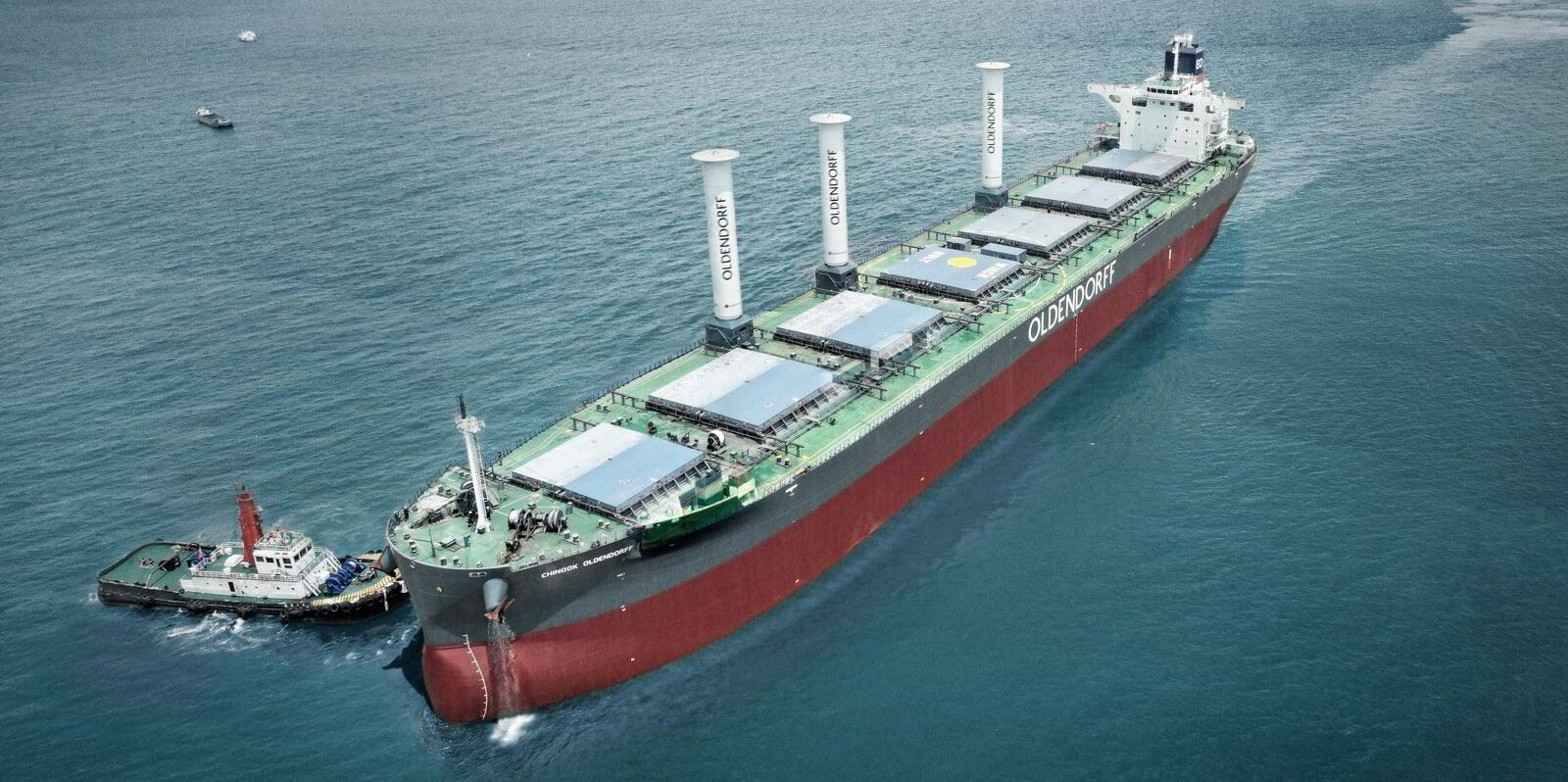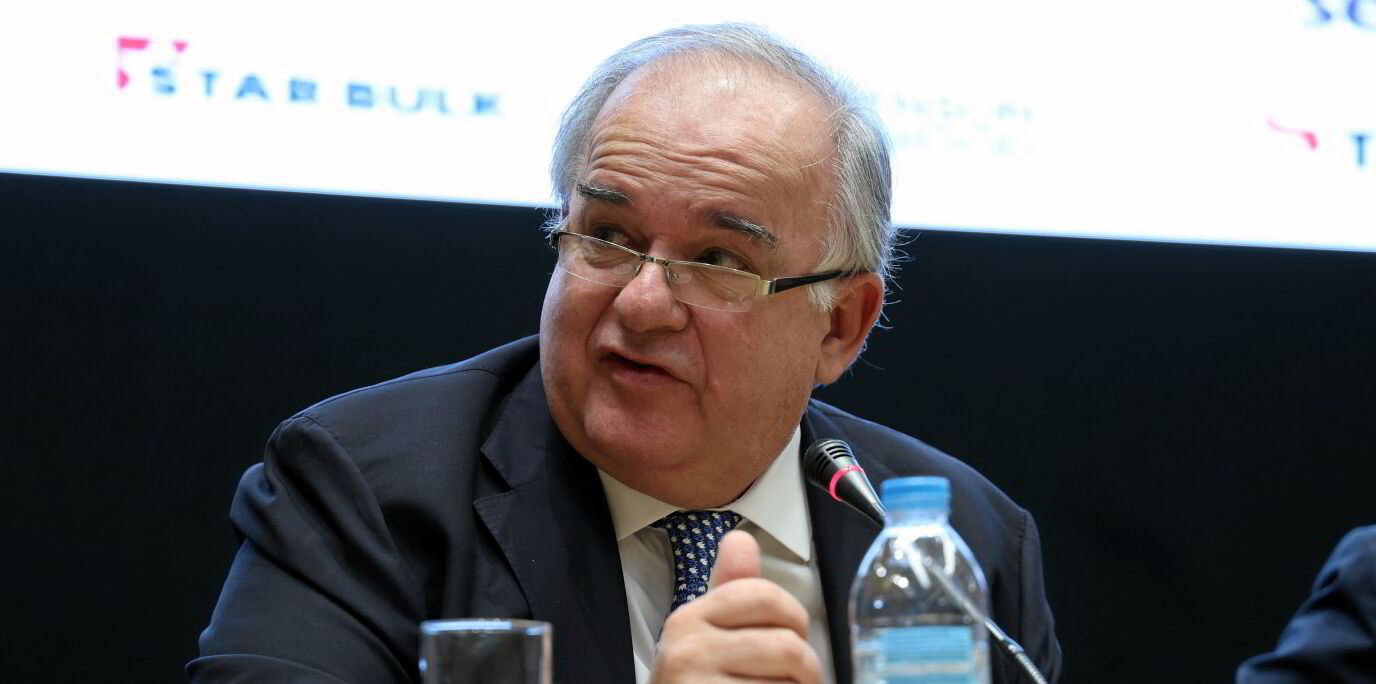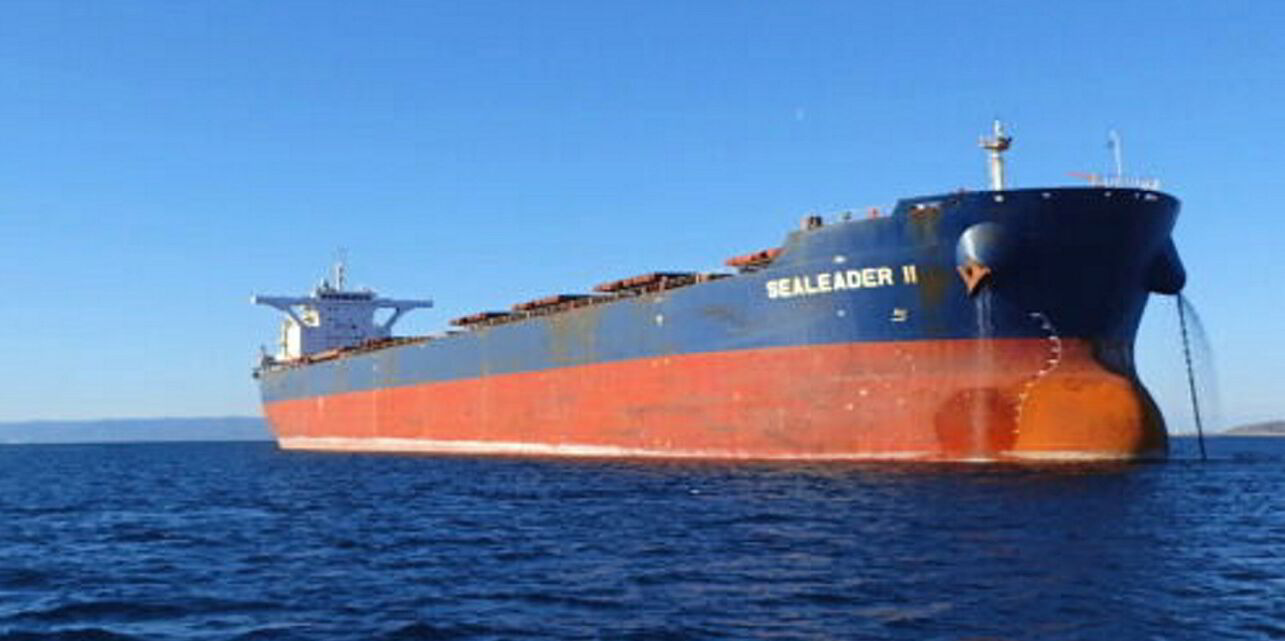Oldendorff Carriers is trying to cut through the “noise” surrounding decarbonisation to find pragmatic ways to slash emissions today, not tomorrow.
That was the rationale behind installing Flettner rotor sails on one of its bulk carriers, the owner-operator’s sustainability team told TradeWinds.
Three of the rotor sails have been fitted on the 100,488-dwt baby capesize bulker Chinook Oldendorff (built 2020), as TradeWinds reported this month.
This was done in partnership with Canadian miner Teck Resources, which rebranded as Elk Valley Resources after selling its steelmaking coal division to Glencore in July.
Russ McNeil, managing director of Oldendorff’s Vancouver office, told TradeWinds that Teck Resources approached Oldendorff in 2021 to explore ways of cutting its Scope 3 carbon emissions from shipping for specific trade routes.
Initially, Oldendorff deployed easy wins — ships with eco-designs, slow steaming and upsized cargo stems to make transport more efficient onboard bigger vessels.
That reduced carbon emissions by 45%, compared with previous shipping arrangements.
The Flettner rotors, supplied by Norsepower, can cut emissions by up to 15% on top of these savings.
Teck Resources, now known as Elk Valley Resources and one of Canada’s biggest miners, aims to achieve net-zero Scope 3 emissions by 2050.
Before the buyout, Teck Resources took an activist approach to invest in decarbonising its supply chain and has partnered on green initiatives with owner-operators including Norden.
In April, Teck Resources and Oldendorff became two of the nine founding members of the North Pacific Green Corridor Consortium, a collaborative effort to reduce carbon emissions from dry cargo supply chains between North America and Asia for commodities such as agricultural products, metal concentrates and steelmaking coal.
Oldendorff has a contract of affreightment in place to carry an undisclosed volume of coal for the miner from Vancouver, Canada, to the Far East over several years.
The fact that the Chinook Oldendorff is fixed on a CoA means there is a degree of flexibility in timing for each voyage. This allows the vessel to take a slightly longer route to capture the strongest winds.
Flettner rotors generate the most power when winds hit the sails at a 90-degree angle from the ship’s heading.
Teck Resources and Oldendorff have invested jointly in the rotor installation and will also split the savings.
Paying for it
Teck Resources has been one of the rare charterers that has been willing to co-invest with shipowners in decarbonisation solutions (see box).
McNeil said: “With respect to big shippers wanting to cut their Scope 3 emissions, I think there’s a lot of genuine desire to do so, but very few that can get the numbers working to make it commercially viable.
“That’s the reality of it.”
But it is a misconception that decarbonising will be expensive.
Henrik Christiansen, executive director at Oldendorff, said: “It does not always have to cost money.
“There are ways to do it that are either cheap or for free.
“That’s what we’re working on in many cases because there is reluctance out there to pay for this. It’s a huge issue.”
The complex, expensive reputation of alternative marine fuels means that cheaper, readily available ways to cut carbon are being ignored, he continued.
“We think that’s a mistake,” Christiansen said. “One of our main strategies is to be practical.”
Oldendorff’s strategy is based on cutting the volume of carbon emitted per 1,000 tonnes of cargo carried, not the Carbon Intensity Indicator.
The company has been an outspoken critic of the regulation (see box).
Usually media-shy, Oldendorff made a splash at the end of 2022 by preparing a 90-page document that criticised the Carbon Intensity Indicator regulation in detail.
So how does Oldendorff feel about the regulation in 2024, over a year since it entered into force?
“I think there’s a unanimous position from the entire industry and all those stakeholders that are linked to the industry that it’s an inherently flawed piece of regulation that should have never happened, and it’s not helping at all [because] the current CII formula motivates the wrong behaviour and doesn’t bring down the carbon emissions,” said Christopher Fee, Oldendorff’s director of legislative affairs and outreach.
That said, Oldendorff must still comply with the regulation.
“Our logic is simple — it’s that cargo will continue to move in this world,” said Christiansen.
“If we can do it in the most efficient way, on a [carbon emitted] per-tonne of cargo basis that we move, we got something right. That’s the approach and Teck bought into that logic.
“We couldn’t use what we were given by the IMO [International Maritime Organization], which is simply wrong,” Christiansen said, referring to CII. “This is not a way of saving emissions.”
Cut the noise
Torsten Barenthin, Oldendorff’s director of research and development, thinks there is too much “noise” in the conversation around decarbonising shipping.
An example would be onboard carbon capture.
“We see projects, but there’s a fundamental question: how to get rid of and how to store the CO2 captured,” he said.
“Without having the fundamental question solved, it doesn’t make sense to invest in the carbon capture of CO2 for long-haul voyages.”
He perceives many unanswered questions surrounding the frontrunners of alternative marine fuels, ammonia and methanol.
Torsten Barenthin, Oldendorff’s director of research and development, perceives a wider problem in the way the world tells misleading stories about cutting carbon from supply chains and the added costs for consumers.
“There is this very famous quote of what is the extra price on a pair of Nike shoes? This is nice because if I want to calculate that on a per-tonne basis, it’s a compelling argument,” Barenthin said.
Bulk materials such as cement, iron ore, grain and soybeans have a lower value per tonne than Nike shoes but are more important to the world economy.
“The impact of this substantially increases the relative cost of using [greener] fuel, which in turn significantly impacts the cost of the cargo transport and the price of the delivered raw material,” he said.
“If you think of increased expense for soya beans or cement, that would have a huge impact, for example, for developing countries who are net importers because they would have to pay 10% or 50% on [top of] the commodity.
“I don’t want to use the word ‘greenflation’, but all this stuff has an impact on the worldwide economy.”





